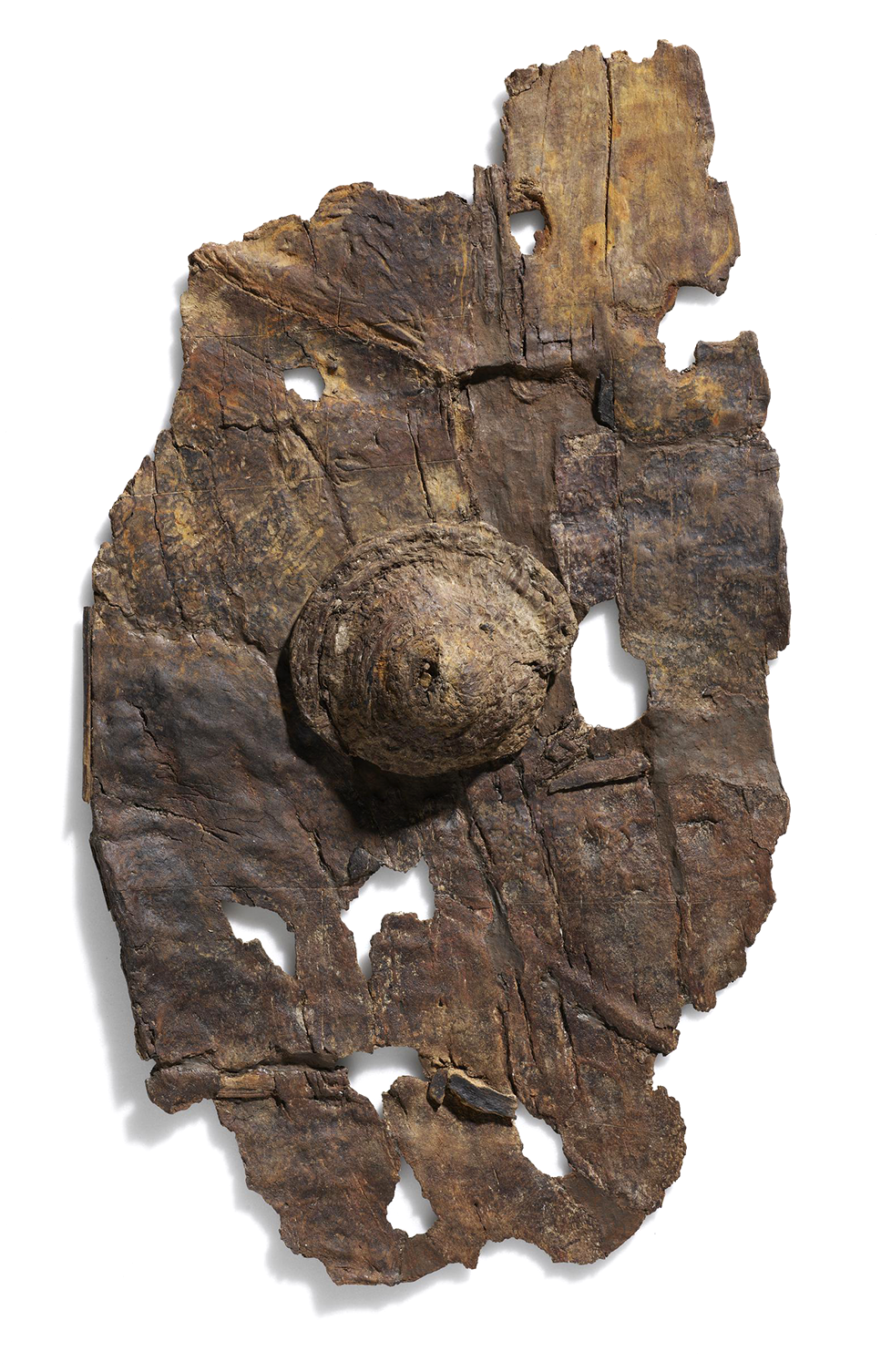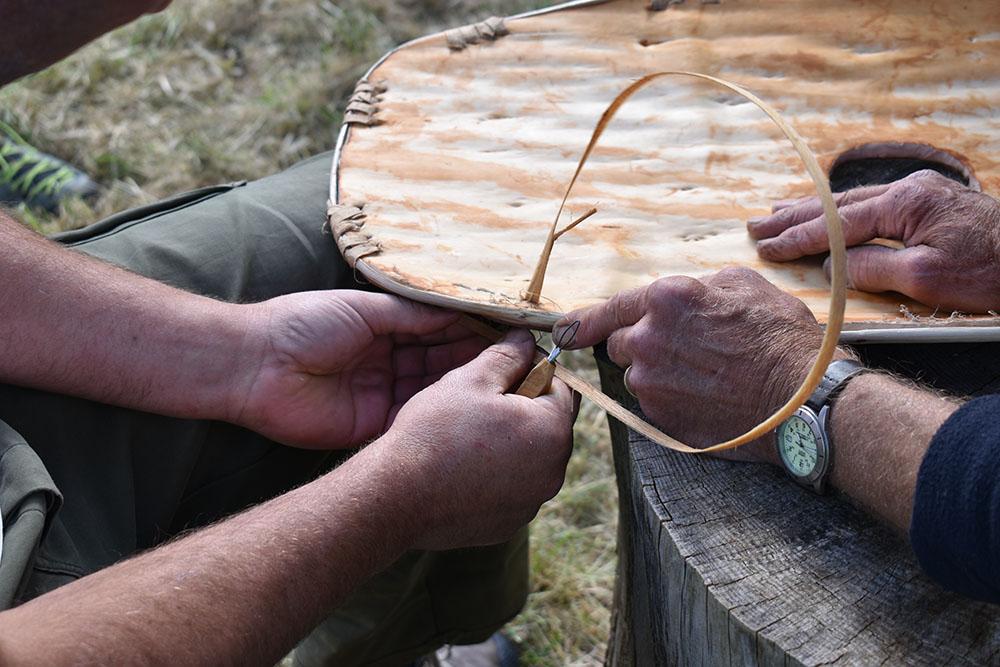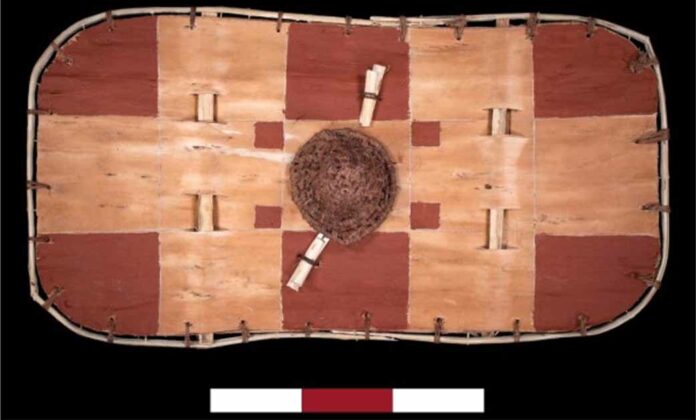In a remarkable revelation that enhances our understanding of ancient craftsmanship, archaeologists have discovered a 2,300-year-old bark shield at the Iron Age site of Everards Meadows near Enderby, Leicestershire. Unearthed in 2015, this artifact is notable for being the only bark shield ever found in Europe. The shield’s design and construction showcase an advanced grasp of materials and defensive technology during the Iron Age, challenging earlier beliefs regarding the resilience and application of bark in antiquity.
An Exceptional Archaeological Discovery
The bark shield, measuring 26.3 by 14.6 inches (67 by 37 cm) at the time of its excavation, is an extraordinary find. While it’s known that prehistoric individuals utilized bark to create bowls and boxes, this marks the first documented case of bark being fashioned into a weapon. According to archaeologist Michael Bamforth from the University of York and his colleagues, this shield represents a groundbreaking application of materials in prehistoric Europe.

Advanced Analysis and Reconstruction
To gain a comprehensive understanding of the shield’s construction, the research team utilized several cutting-edge analytical techniques, including CT scanning and 3D printing. These innovative methods enabled them to reconstruct the shield’s original form and design. The analysis indicated that the shield was carefully crafted with wooden laths for added support, a wooden rim, and a finely woven boss that protected the handle. The exterior featured red chequerboard patterns, highlighting the artistic talent of its creator.
Materials and Artistray
A thorough examination of the shield’s materials identified that the bark likely came from alder, willow, poplar, hazel, or spindle trees, with the outer bark forming its interior. The stiffening laths were made from apple, pear, quince, or hawthorn wood, while a half-split hazel rod formed the rim. The boss was constructed from a willow core and stitched together using flat fibers from grass, rushes, or bast fiber. The handle was crafted from willow roundwood, flattened at both ends, notched, and secured to the bark with twisted ties.

The outer surface displayed a chequerboard pattern etched into the bark, with sections painted using a red hematite-based pigment. Despite its intricate design, the shield showed signs of significant damage, likely sustained before it was deposited in what is believed to have been a watering hole for livestock. An irregular elliptical hole may have resulted from an iron spear’s pointed tip, while other cuts indicate impacts from bladed weapons.
Radiocarbon dating has established that the shield was created between 395 and 255 BC, placing it within a crucial phase of prehistoric Britain and offering fresh insights into the era’s technological advancements.
A Glimpse into Prehistoric Innovation
Dr. Matthew Beamish, an archaeologist from the University of Leicester, underscored the importance of this find, stating, “We have gained invaluable knowledge from fragile evidence that could have easily been overlooked. This project has provided a remarkable collaboration that offers a rare view into our prehistoric heritage.” The discovery of this bark shield has opened new avenues for understanding prehistoric technology by revealing an innovative use of materials previously thought improbable.

Rethinking Bark Shields’ Effectiveness
Initially, researchers were doubtful about a bark shield’s viability in combat due to the material’s weak reputation for strength and durability. However, through experimental archaeology, the team found that bark could withstand blows from metal weapons more effectively than anticipated. Although not as sturdy as wooden or metal shields, the lighter weight of a bark shield would have afforded users greater agility in battle, making it a practical defensive option.

Conclusion
The unearthing of the 2,300-year-old bark shield at Everards Meadows exemplifies the creativity and resourcefulness of prehistoric peoples. Its intricate structure, elaborate decorations, and evidence of use offer a captivating insight into Iron Age Britain. This singular artifact not only challenges previous conceptions regarding material usage in ancient times but also emphasizes the significance of experimental archaeology in illuminating our distant past. As Dr. Rachel Crellin from the University of Leicester noted, “The first time I saw the shield, I was completely mesmerized: its complex structure, meticulous decorations, and beautiful boss.” Indeed, this extraordinary discovery has deepened our appreciation for prehistoric technology and craftsmanship in ways that remain impactful today.

